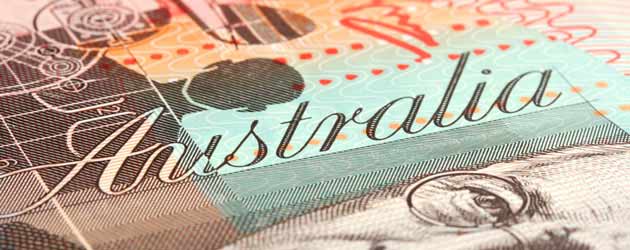
The Pound to Australian Dollar exchange rate sunk from 1.6790 to 1.6750 in the 15-minutes following the release of last night’s Reserve Bank of Australia Minutes report.
The RBA Minutes signalled that an interest rate cut in the immediate future was fairly unlikely, but indicated that further reductions to the benchmark rate were certainly possible in the future. The key sentence mirrored the message from the previous two RBA statements:
“Members agreed that the Bank should again neither close off the possibility of reducing rates further nor signal an imminent intention to reduce them”.
Some traders interpreted this as a delayed easing bias, suggesting that more easing is on the way, just not right now. This view was backed-up by comments on: “below average household consumption”, “subdued labour market conditions”, “softer growth of wages”, “below trend growth of economic activity” and “the appreciation of the exchange rate”.
However, these negative elements were tempered by encouraging signs such as: consumer confidence being “above average levels”, “business confidence increasing”, “increased appetite for borrowing” and “more positive Chinese data”.
The RBA concluded that the “substantial degree of policy stimulus” that has already been injected into the Australian economy should be allowed to run its course before further easing measures are introduced, which bolstered demand for the ‘Aussie’ Dollar from investors looking at GBP/AUD with a near-term timeframe.
Sterling’s -0.4 cent decline earlier this morning followed a more severe -0.8 cent decline yesterday as stronger-than-anticipated Chinese inflation figures buoyed the high-risk Pacific currency. The Chinese Consumer Price Index for September rose unexpectedly form 2.6% to a rather robust 3.1%.
The Pound could come under more selling pressure later on this morning when the UK CPI is released for September. The headline inflation index is predicted to have fallen by one percentage point to 2.6% last month, bringing CPI another step closer to the Bank of England’s 2.0% target. The inflation report holds special significance for Sterling at the moment because the BoE has indicated that it is likely to hike interest rates if CPI remains above 2.5% for 18 months.
The overarching reason for the Pound’s meteoric rise against the majority of its currency peers this summer was speculation that interests rates in the UK will be raised earlier than forecast, but if these hopes are dashed then Sterling could give back some of its gains.
Conversely, a stronger-than-expected UK CPI result could re-ignite rate hike bets and send Sterling higher.

Comments are closed.